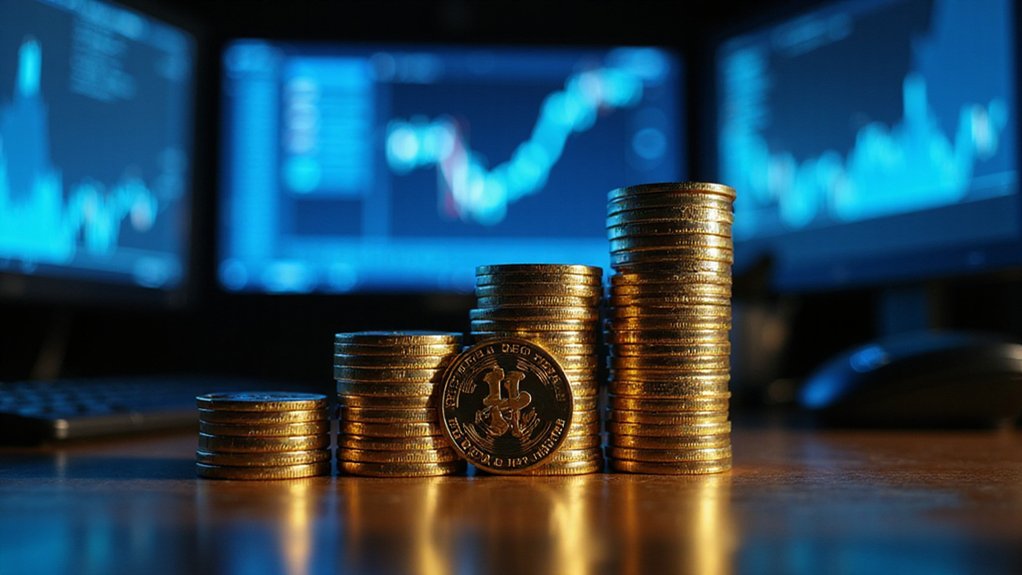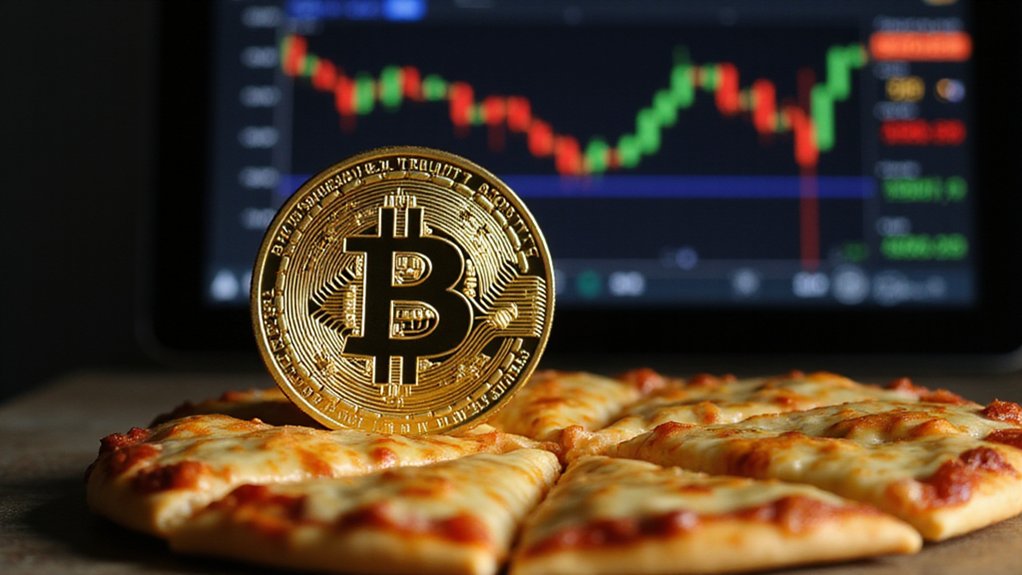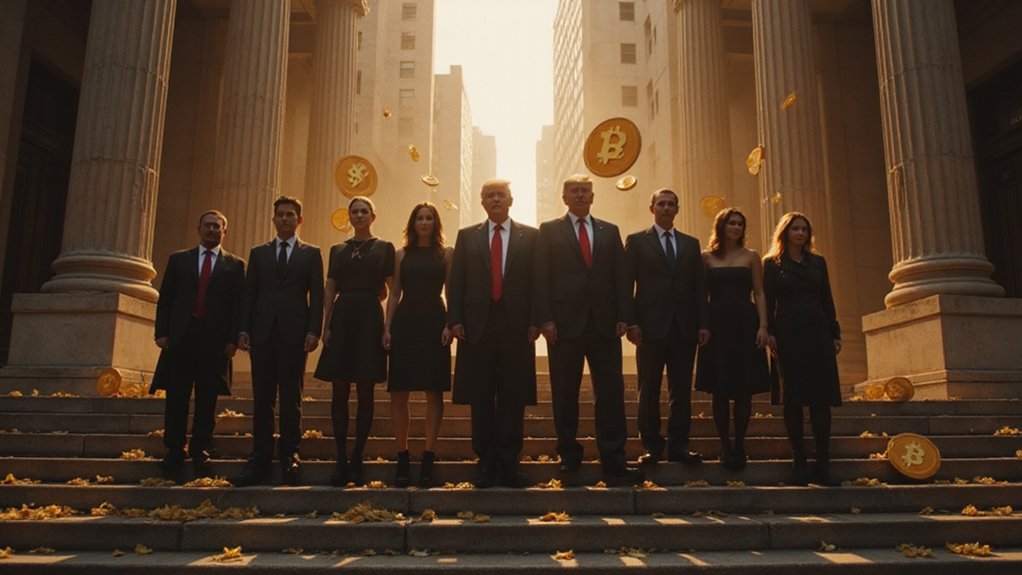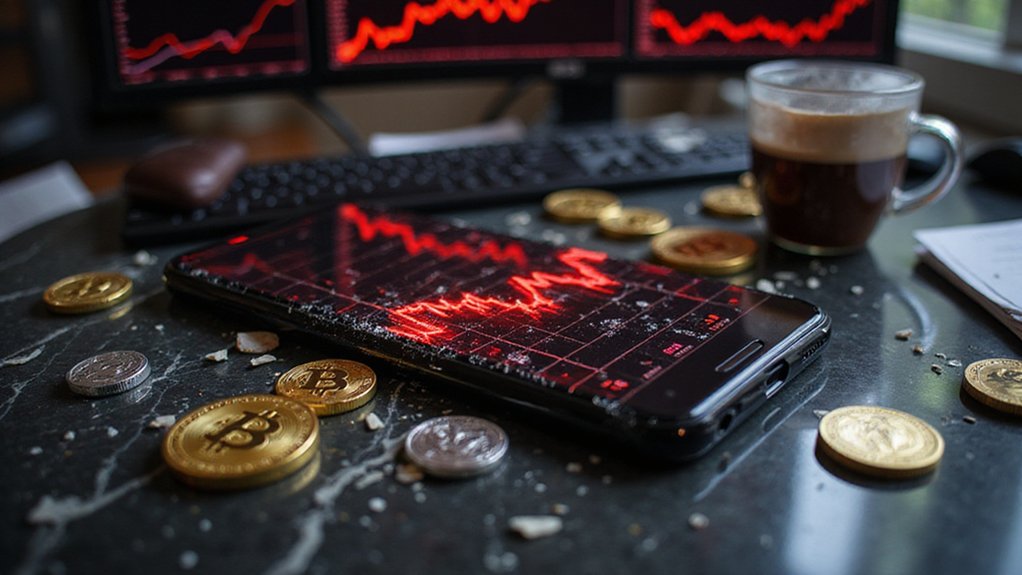When did a comedian-turned-podcaster become one of cryptocurrency’s most influential voices?
Joe Rogan’s Bitcoin journey from casual Bitcoin curiosity to crypto skeptic reads like a microcosm of the entire digital asset narrative—complete with revolutionary fervor, spectacular collapses, and the inevitable reckoning.
Rogan’s cryptocurrency education began earnestly in 2013 with philosopher Stefan Molyneux, followed by substantive conversations with Bitcoin evangelist Andreas Antonopoulos in 2014 and 2016.
These early discussions painted Bitcoin as revolutionary technology, with Antonopoulos providing the technical foundation that shaped Rogan’s initial optimism.
The podcaster’s platform became an unlikely classroom for millions of listeners discovering blockchain fundamentals through accessible dialogue.
However, the memecoin proliferation of 2022 triggered Rogan’s philosophical pivot.
The 2022 memecoin explosion marked Rogan’s ideological shift from crypto optimism to measured skepticism.
His dismissal of Dogecoin as a “joke coin” reflected broader market saturation concerns—a sentiment that intensified following the FTX implosion.
Sam Bankman-Fried’s spectacular fraud became Rogan’s recurring reference point for industry systemic risks, transforming his show into a forum for crypto skepticism rather than evangelism.
The creditor payout beginning May 30, 2025, marks one of the largest financial recovery efforts in U.S. history, with $5.4 billion scheduled for distribution to affected customers.
Enter Michael Saylor, MicroStrategy’s Bitcoin maximalist CEO, whose bold debate invitation represents a fascinating collision of personalities.
Saylor’s corporate treasure strategy—converting billions into Bitcoin—embodies the institutional adoption narrative that early crypto advocates envisioned.
His potential appearance would pit unwavering Bitcoin conviction against Rogan’s evolved wariness.
The stakes extend beyond intellectual discourse.
Rogan’s platform reaches millions of retail investors whose sentiment can trigger measurable market volatility¹.
Previous crypto episodes generated significant social media chatter and trading activity, demonstrating the peculiar reality that podcast conversations now function as market-moving events.
Recent guests like Coffeezilla have reinforced Rogan’s skeptical trajectory, highlighting crypto scams and regulatory gaps with forensic precision.
Yet Rogan maintains reverence for Bitcoin as the “King of Cryptos,” suggesting his criticism targets speculative excess rather than foundational blockchain technology.
The proposed Saylor debate could crystallize cryptocurrency’s current inflection point—institutional legitimacy versus retail speculation, revolutionary potential versus fraudulent reality.
Whether this conversation reignites mainstream crypto enthusiasm or further cements public skepticism remains an open question with potentially profound market implications.
¹Market makers increasingly monitor influencer sentiment for trading signals, reflecting social media’s integration into algorithmic trading strategies.









